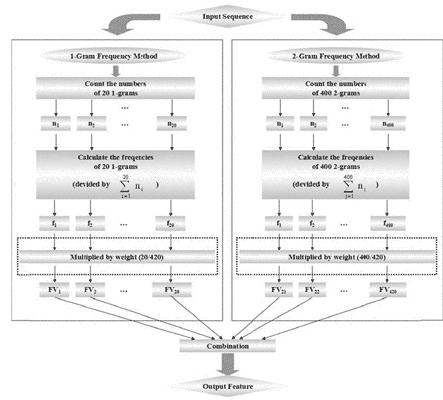Abstract
Recent developments in bioinformatics have highlighted the importance of protein structure prediction for which information about structure classes forms the foundation and plays an important role in the prediction of protein folds and tertiary structure. The majority of previous researches have focused on only four protein classes in the Structure Classification of Proteins (SCOP) database. In this paper, we focused mainly on finding the best performing prediction method using SCOP—extended (SCOPe, Release 2.03; previously known as version 1.75C in SCOP), which contains seven major protein classes, including all-α proteins, all-β proteins, α/β proteins, α+β proteins, multi-domain proteins, membrane and cell surface proteins and peptides, and small proteins. The framework that we developed consists of two stages: in the first stage we used a hybrid frequency method for feature extraction from a SCOPe dataset, and in the second stage, we calculated an effective parameter (number of trees) for the Random Forest Classifier. Our computational results on the SCOPe dataset demonstrate the efficiency and effectiveness of our model that generated predictions with an accuracy of 88%, which is much higher than the accuracies reported in previous studies. These encouraging results may be helpful for future research on protein structure and protein fold prediction. Our codes are available in http://datamining.xmu.edu.cn/~zhaoxuewei/PSP.
Keywords: Classifier, n-gram feature, Protein class, Protein structure prediction, random forests, SCOP dataset.

























